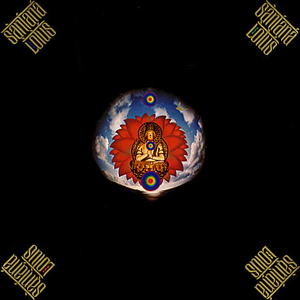Dolby Digital, originally synonymous with Dolby AC-3, is the name for what has now become a family of audio compression technologies developed by Dolby Laboratories. Formerly named Dolby Stereo Digital until 1995, the audio compression is lossy, based on the modified discrete cosine transform (MDCT) algorithm. The first use of Dolby Digital was to provide digital sound in cinemas from 35 mm film prints; today, it is also used for applications such as TV broadcast, radio broadcast via satellite, digital video streaming, DVDs, Blu-ray discs and game consoles.

Quadraphonic sound – equivalent to what is now called 4.0 surround sound – uses four audio channels in which speakers are positioned at the four corners of a listening space. The system allows for the reproduction of sound signals that are independent of one another.

Surround sound is a technique for enriching the fidelity and depth of sound reproduction by using multiple audio channels from speakers that surround the listener. Its first application was in movie theaters. Prior to surround sound, theater sound systems commonly had three screen channels of sound that played from three loudspeakers located in front of the audience. Surround sound adds one or more channels from loudspeakers to the side or behind the listener that are able to create the sensation of sound coming from any horizontal direction around the listener.
Dolby Pro Logic is a surround sound processing technology developed by Dolby Laboratories, designed to decode soundtracks encoded with Dolby Surround. The terms Dolby Stereo and LtRt are also used to describe soundtracks that are encoded using this technique.
Matrix decoding is an audio technology where a small number of discrete audio channels are decoded into a larger number of channels on play back. The channels are generally, but not always, arranged for transmission or recording by an encoder, and decoded for playback by a decoder. The function is to allow multichannel audio, such as quadraphonic sound or surround sound to be encoded in a stereo signal, and thus played back as stereo on stereo equipment, and as surround on surround equipment – this is "compatible" multichannel audio.

Sansui Electric Co., Ltd. was a Japanese manufacturer of audio and video equipment. Headquartered in Tokyo, Japan, it was part of the Bermuda conglomerate.

DTS, Inc. is an American company, DTS company makes multichannel audio technologies for film and video. Based in Calabasas, California, the company introduced its DTS technology in 1993 as a competitor to Dolby Laboratories, incorporating DTS in the film Jurassic Park (1993). The DTS product is used in surround sound formats for both commercial/theatrical and consumer-grade applications. It was known as The Digital Experience until 1995. DTS licenses its technologies to consumer electronics manufacturers.
Dolby Stereo is a sound format made by Dolby Laboratories. It is a unified brand for two completely different basic systems: the Dolby SVA 1976 system used with optical sound tracks on 35mm film, and Dolby Stereo 70mm noise reduction on 6-channel magnetic soundtracks on 70mm prints.

Lotus is a 1974 live album by the Latin rock band Santana, recorded at the Osaka Kōsei Nenkin Kaikan, Osaka, Japan in July 1973, during their Caravanserai Tour. The Welcome album recording sessions were completed shortly before this concert, and that album was later released in November. Lotus was originally released in 1974 as a triple vinyl LP in Japan only. This version of the album was later released internationally.
Ambisonic UHJ format is a development of the Ambisonic surround sound system designed to be compatible with mono and stereo media. It is a hierarchy of systems in which the recorded soundfield will be reproduced with a degree of accuracy that varies according to the available channels. Although UHJ permits the use of up to four channels, only the 2-channel variant is in current use. In Ambisonics, UHJ is also known as "C-Format".

SQ Quadraphonic was a matrix 4-channel quadraphonic sound system for vinyl LP records. It was introduced by CBS Records in 1971. Many recordings using this technology were released on LP during the 1970s.

Home audio systems are audio electronics intended for home entertainment use, such as shelf stereos, music centres and surround sound receivers. Home audio generally does not include standard equipment such as built-in television speakers, but rather accessory equipment, which may be intended to enhance or replace standard equipment, like standard TV speakers. Since surround sound receivers, which are primarily intended to enhance the reproduction of a movie, are the most popular home audio device, the primary field of home audio is home cinema.

Compatible Discrete 4, also known as Quadradisc or CD-4 was as a discrete four-channel quadraphonic system for phonograph records. The system was created by JVC and RCA in 1971 and introduced in May 1972. Hundreds of recordings using this technology were released on LP during the 1970s.
The Hafler circuit is a passive electronics circuit with the aim of getting derived surround sound or ambiophony from regular stereo recordings without using costly electronics. Such circuits are generally known as matrix decoders. The Dynaquad system works using similar principles.
Stereo-4, also known as EV or EV-4, was a matrix 4-channel quadraphonic sound system developed in 1970 by Leonard Feldman and Jon Fixler.

Dynaquad, or DY, was a matrix decoder 4-channel quadraphonic sound system developed by Dynaco in 1969.

UD-4 was a discrete four-channel quadraphonic sound system for phonograph records introduced by Nippon Columbia (Denon) in 1974. This system had some similarities with the more successful CD-4 process introduced by JVC and RCA in 1972.
Matrix H was developed by BBC engineers in the late 1970s to carry quadraphonic sound via FM radio in a way that would be most compatible with existing mono and stereo receivers.










